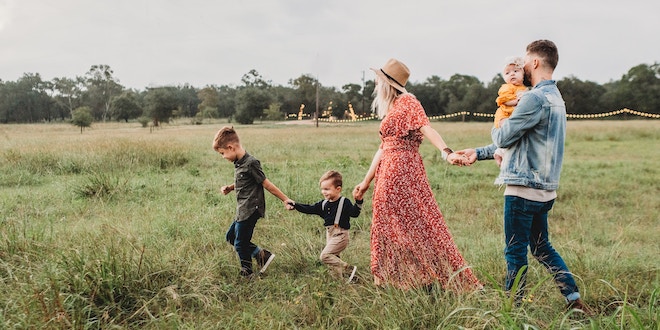Last Updated on December 26, 2023
The anticipation of a family vacation is like no other. Traveling with your family isn’t just about the destinations you visit, it’s about the shared experiences that bring you closer together, the stories that will be told and retold at family gatherings for years to come. Gatlinburg, Tennessee, nestled in the Great Smoky Mountains, offers the perfect backdrop for such unforgettable family experiences. Known for its stunning natural beauty, Gatlinburg presents a world of outdoor adventures that families can explore together, from hiking and wildlife viewing to visiting the iconic Great Smoky Mountains National Park.
However, anyone who has traveled with family knows it’s not all smooth sailing. It requires a fine balance of planning and flexibility, meeting everyone’s needs while still ensuring the trip is enjoyable and memorable. Gatlinburg caters to this with a variety of attractions suitable for all ages. From selecting a place that feels like a second home to packing those essential items that keep peace during long journeys, each aspect plays a crucial role in the success of the trip.
So, let’s embark on this journey together, making your next family vacation not just a getaway but an unforgettable experience for everyone involved. In Gatlinburg, every moment spent together becomes a cherished memory, reinforcing the bonds that make family vacations so special.
1. Choosing the Right Accommodation
When planning a family trip, where you stay is as important as what you do. The right accommodation sets the tone for your entire holiday. For instance, places like Stony Brook Lodging offer more than just a place to sleep; they provide a comfortable base where your family can relax and recharge.
Consider what matters most for your family. Do you need a kitchen to prepare meals for picky eaters or extra space for energetic toddlers? Amenities such as swimming pools, play areas, and proximity to attractions can also make a big difference. Remember, the goal is to find a place that feels like a home away from home.
2. Packing Smart
Packing for a family involves more than just throwing clothes into a suitcase. It’s about being prepared for all scenarios without overpacking. Start with a list. Include clothes, toiletries, and essentials like chargers, first-aid kits, and snacks. For young children, don’t forget their favorite toy or blanket – these small comforts can be a lifesaver.
Also, pack smart. Roll clothes to save space and use packing cubes to keep things organized. Check the weather at your destination to pack appropriately, and always have a change of clothes handy for those unexpected spills or weather changes.
3. Planning Your Itinerary
An itinerary for a family trip should strike the perfect balance between activities and rest. It’s tempting to pack your days with sightseeing, but remember; children might tire more quickly. Mix in leisurely activities like a day at the beach or a leisurely park visit. This gives everyone a chance to recharge.
Flexibility is key. With kids, unexpected situations – a tantrum, a sudden need for a nap – are common. Be prepared to adjust your plans. Sometimes, an unplanned day can lead to the most memorable experiences. Don’t be too rigid; allow your trip to unfold naturally for everyone’s enjoyment.
4. Keeping Kids Entertained and Engaged
Long travel days can be challenging with kids. Keeping them entertained is crucial for a peaceful journey. Pack a mix of activities – books, games, and downloadable movies or apps can be lifesavers. Don’t underestimate the power of simple games like ‘I Spy’ or travel bingo.
Engage them in the travel process. Let them help choose activities or plan a day. This not only keeps them interested but also helps them feel like a vital part of the trip. Remember, a bored child can quickly become a cranky traveler, so variety and involvement are key to a smooth journey.
5. Eating Out with kids
Dining out with kids can be an adventure in itself. When traveling, finding restaurants that cater to the younger palate is important. Look for places with a kid-friendly menu that offers a variety of options. This way, you can ensure that there are foods that your kids will enjoy, avoiding mealtime battles.
Always check for family-friendly amenities like high chairs, booster seats, and children’s activities or play areas. These can make the dining experience more comfortable for both you and your children. Don’t hesitate to ask locals or hotel staff for recommendations; often, they’ll know the best spots that cater to families.
6. Managing Travel Budgets for a Large Group
Traveling with a family often means managing a tighter budget. Plan ahead and set a realistic budget for your trip. Look for accommodations and activities that offer family discounts or packages. Eating out for every meal can add up quickly, so consider staying somewhere with a kitchen to cook some meals.
It’s also helpful to prioritize your activities. Decide on a few must-do experiences and find more affordable or free activities for other days. Remember, it doesn’t always take a big budget to create lasting memories. Sometimes, the simplest experiences, like a picnic in the park, can be the most enjoyable.
7. Making Learning Fun: Educational Aspects of Travel
Integrating education into your family trip can enrich the experience and leave your kids with valuable knowledge and memories. Here’s how to make learning an exciting part of your journey:
Visit Historical Sites and Museums: Choose destinations with rich histories and museums. Explain the significance of these places to your children in a fun and engaging way.
Nature Exploration: If you’re near natural reserves, forests, or beaches, take the opportunity to teach your kids about different ecosystems, wildlife, and the importance of conservation.
Local Culture Immersion: Encourage your children to learn a few words of the local language, try traditional foods, and participate in local customs. This fosters respect and appreciation for diverse cultures.
Interactive Experiences: Look for interactive experiences like workshops, guided tours, or educational programs specifically designed for children. These activities are often both fun and informative.
Scavenger Hunts: Create a scavenger hunt that includes finding specific landmarks, local flora and fauna, or historical facts. This keeps children engaged and attentive to their surroundings.
Travel Journal: Encourage your children to keep a travel journal. They can write about their experiences, draw what they see, or stick souvenirs like ticket stubs and postcards. This not only reinforces their learning but also serves as a keepsake.
By making education a fun part of the travel experience, you’re creating a more enriching trip for your children. They won’t just see new places; they’ll learn from them, developing a deeper understanding and curiosity about the world.
Conclusion
Traveling with family is an enriching experience that creates lifelong memories. By choosing the right accommodation, packing smartly, planning a balanced itinerary, keeping kids entertained, eating at kid-friendly places, managing your budget, prioritizing safety and health, navigating transportation wisely, and incorporating educational elements, you ensure a smooth and enjoyable trip for everyone. Embrace these tips to make your family travel not just a journey but a delightful adventure filled with learning, laughter, and love.
 Travel for Food Hub The Food Blog for Travel Lovers
Travel for Food Hub The Food Blog for Travel Lovers















